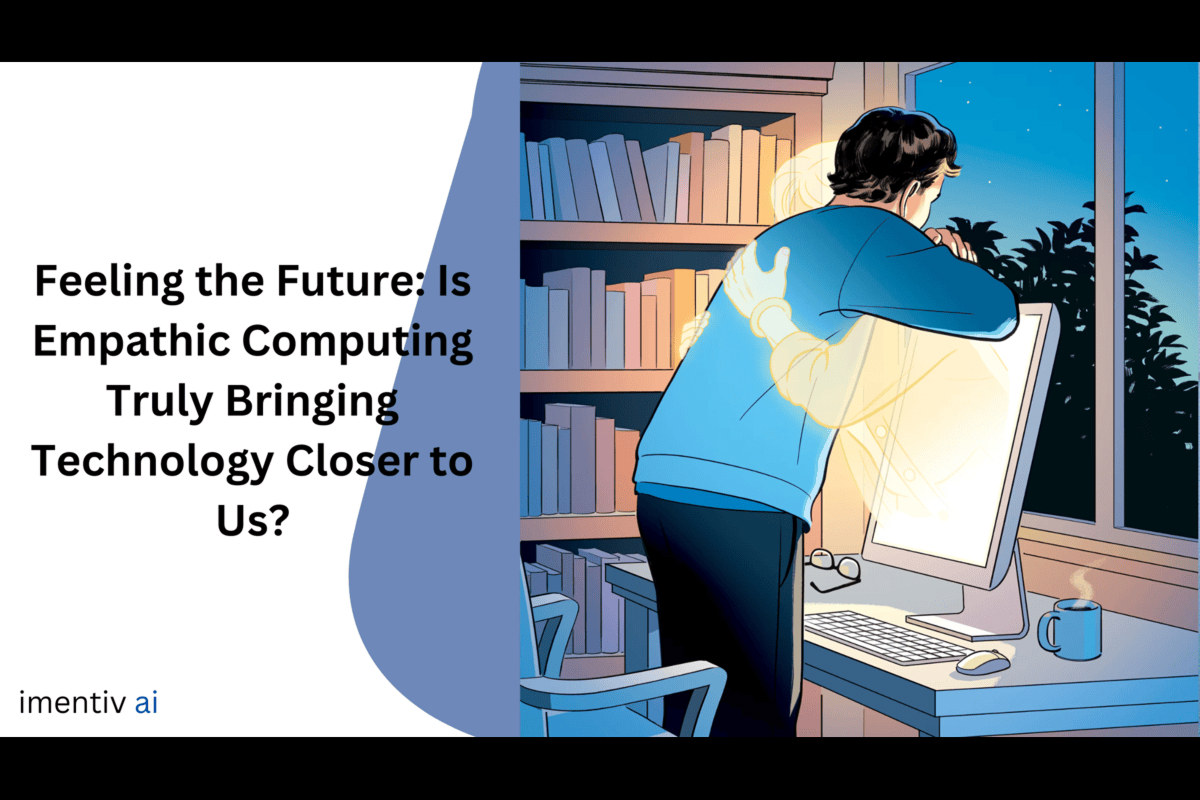
The Rise of Empathic Computing: Where Machines Understand Your Emotions
Empathic computing blends psychology with technology, creating systems that understand, interpret, and respond to human emotions. The goal is simple yet profound: to make technology not just reactive but truly empathetic. Sounds futuristic? The future is already here.
What is Empathic Computing?
Empathic computing refers to the integration of emotional intelligence into computing systems. It involves the use of multimodal data: facial expressions, voice tone, physiological signals, and text-based sentiment to recognize and respond to human emotions. Unlike traditional AI, which primarily focuses on logic-based decision-making, empathic computing embeds emotional understanding into machines, creating more natural and supportive interactions.
Psychology + Technology = Empathic Machines
At the heart of empathic computing lies the intersection of psychology and AI. Psychological theories on emotional intelligence, nonverbal communication, and human behavior have significantly influenced the development of empathic systems.
Techniques like the Facial Action Coding System (FACS) and sentiment analysis help machines interpret subtle emotional cues. Psychological insights also enable these systems to understand emotional nuances across different cultural, social, and individual contexts.
How Empathic Computing Works
The magic behind empathic computing is a cocktail of AI, machine learning, and psychology:
- Facial Expression Recognition: Cameras analyze micro-expressions to detect emotions like happiness, sadness, or frustration.
- Voice Tone Analysis: Algorithms assess vocal cues to identify stress, anger, or calmness.
- Text-Based Sentiment Analysis: Natural language processing tools gauge emotional tone in written communication.
- Physiological Signal Monitoring: Wearable devices track heart rate and skin conductance to detect stress or anxiety.
These data streams are combined using multimodal AI, creating a comprehensive emotional profile that machines can act on.
Empathic Computing in Action
Empathic computing is already reshaping various industries:
- Healthcare: Virtual therapists like AI-powered mental health support assess emotional states and provide tailored interventions.
- Customer Service: Chatbots that acknowledge user frustration before offering solutions can significantly improve user satisfaction.
- Education: Emotionally aware learning platforms can adapt teaching methods based on students' engagement levels.
- Smart Devices: Amazon Alexa now detects whether users sound happy, sad, or frustrated, adjusting its tone accordingly.
Even ChatGPT isn't far from the empathic computing family. Ever noticed how it adapts its tone to match yours? Crack a joke, and it plays along. Ask for something serious, and it shifts to a more formal tone, like having a conversation with someone who genuinely gets your vibe.
Imentiv: Leveraging Empathic Computing for Human-Centric Solutions
Imentiv AI uses the principles of empathic computing, pioneering the use of multimodal AI to create emotionally intelligent systems. Affective AI integrates facial expressions, voice tone and Text Sentiment to develop human-centric applications across various domains.
.png?alt=media&token=3a67fb1e-0530-4ddc-a223-eaf78ae057b9)
Imentiv AI, uses emotion detection technology to analyze not just facial expressions or voice tones, but also underlying personality traits. Imagine a virtual meeting where your AI tool doesn't just transcribe but understands who's feeling confident, anxious, or disengaged, offering personalized suggestions to improve the entire experience.
Imentiv's video, "Assessment and Intervention with Suicidal Clients: Volume 1," exemplifies the application of empathic computing principles.
By integrating advanced Emotion AI technology, Imentiv enhances therapeutic practices through the following methods:
- Emotion Recognition and Analysis
Imentiv's AI tools analyze facial expressions, voice tones, and text-based sentiments to detect emotions such as sadness, anxiety, or distress. This multimodal approach provides therapists with a comprehensive understanding of a client's emotional state, enabling more empathetic and tailored interventions.imentiv.ai
- Enhancing Therapist Self-Awareness
The platform allows therapists to reflect on their own emotional responses during sessions. By analyzing their emotions, therapists can identify biases or areas needing improvement, fostering a deeper connection with clients and enhancing therapeutic effectiveness.imentiv.ai
- Personalized Client Interventions
By understanding the nuanced emotions of clients, therapists can customize interventions to address specific needs. For example, recognizing signs of hopelessness or agitation can prompt immediate, targeted support strategies, crucial in suicide prevention scenarios.
- Data-Driven Insights for Continuous Improvement
Imentiv's Emotion AI provides data analytics that help therapists track emotional trends over time. These insights facilitate continuous improvement in therapeutic approaches, ensuring that interventions remain effective and responsive to each client's evolving emotional landscape.
By incorporating these empathic computing principles, Imentiv enhances the depth and effectiveness of mental health assessments and interventions, promoting a more empathetic and responsive therapeutic environment.
The Ethical Tightrope
With great power comes great responsibility. As empathic computing evolves, it raises critical ethical questions:
- Privacy and Consent: Emotional data is highly sensitive, how will it be collected, stored, and used?
- Emotional Manipulation: Could machines exploit users' emotions for commercial gain?
- Bias in Emotion Detection: Emotional expressions can vary widely across cultures, how do we ensure fairness?
The IEEE 7014-2024 Standard for Ethical Considerations in Emulated Empathy in Autonomous and Intelligent Systems sets guidelines for developing and using empathic technology responsibly. Transparency, data security, and user consent must be at the forefront of this technological revolution.
The Future: Amplifying, Not Replacing, Human Empathy
Before we panic about machines stealing our emotional thunder, let's remember: the purpose of empathic computing isn't to replace human empathy but to amplify it. By bridging the emotional gap in digital interactions, this technology makes our virtual world a little warmer and more human.
Maybe one day, your laptop will offer you a virtual shoulder to cry on (or at least a cat meme) after a long workday.
Note: This technology is a support system and does not replace professional medical care. If you or someone you know is experiencing a mental health crisis, consult a licensed mental health professional or seek immediate help.
To dive deeper into the fascinating world of emotion recognition AI and its applications, read more here: https://imentiv.ai/blog/understanding-emotion-ai-applications-benefits-and-limitations/
#EmpathicComputing #EmotionAI #FutureOfTech #AffectiveAI #Psychology
